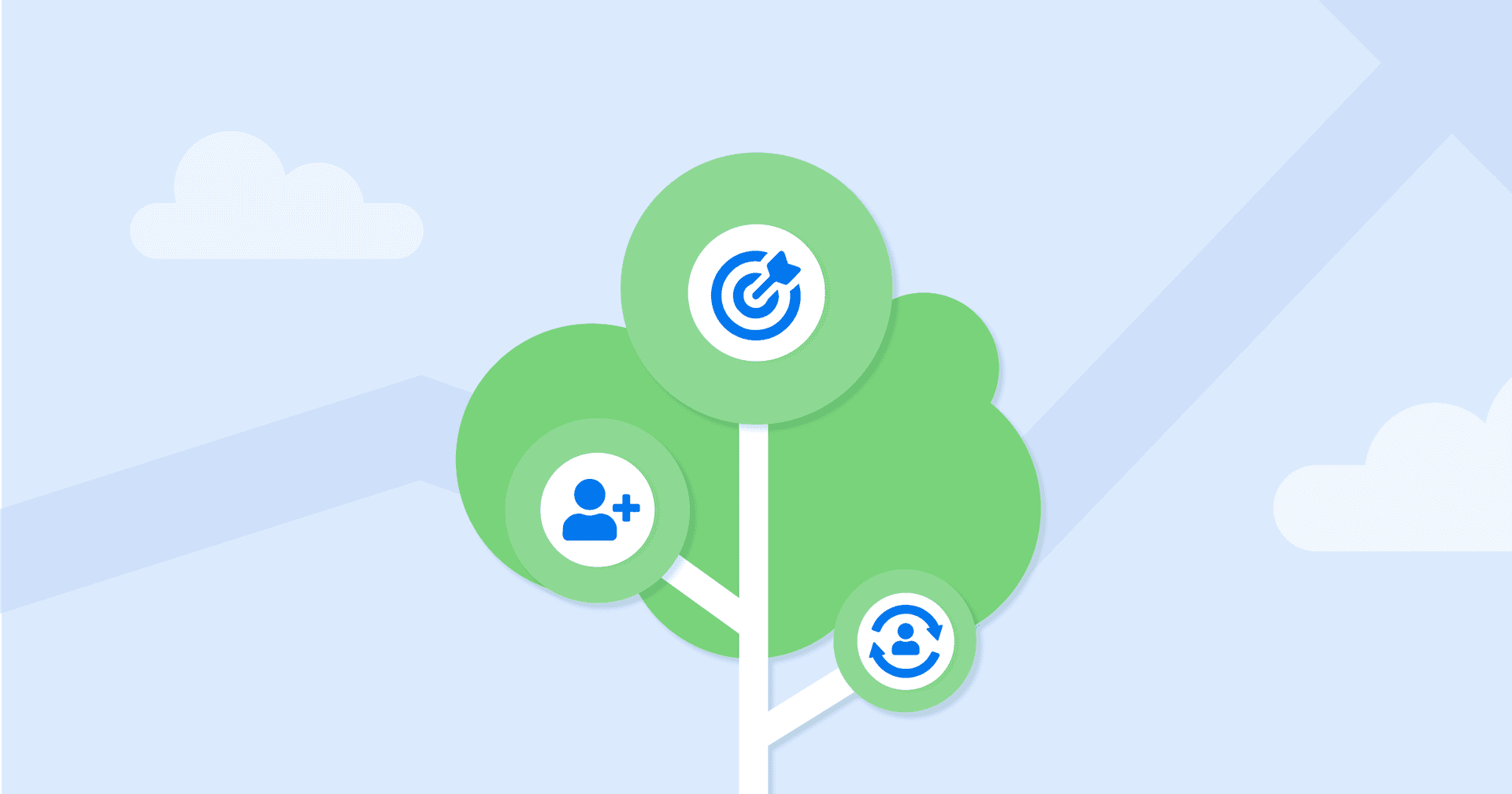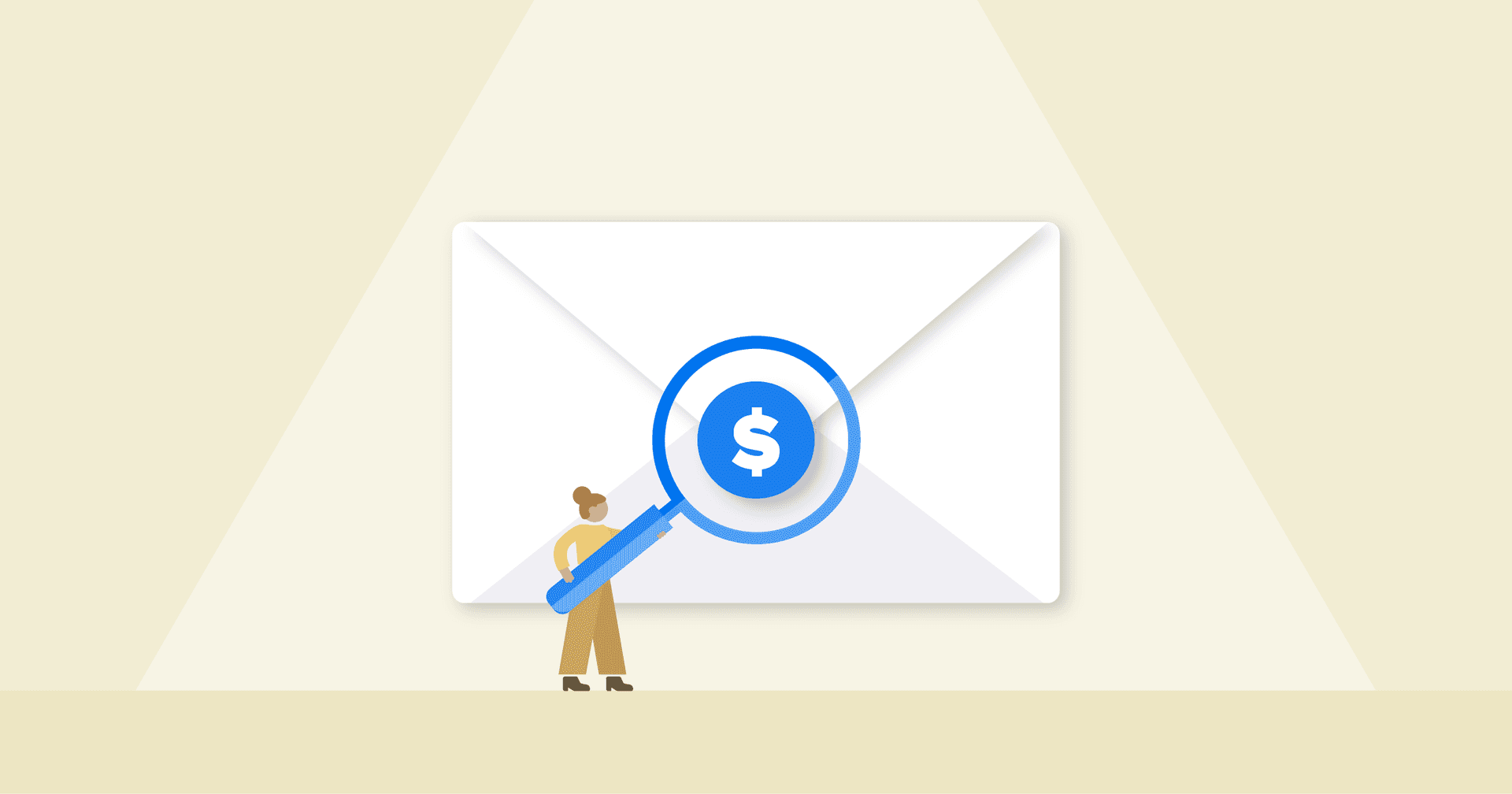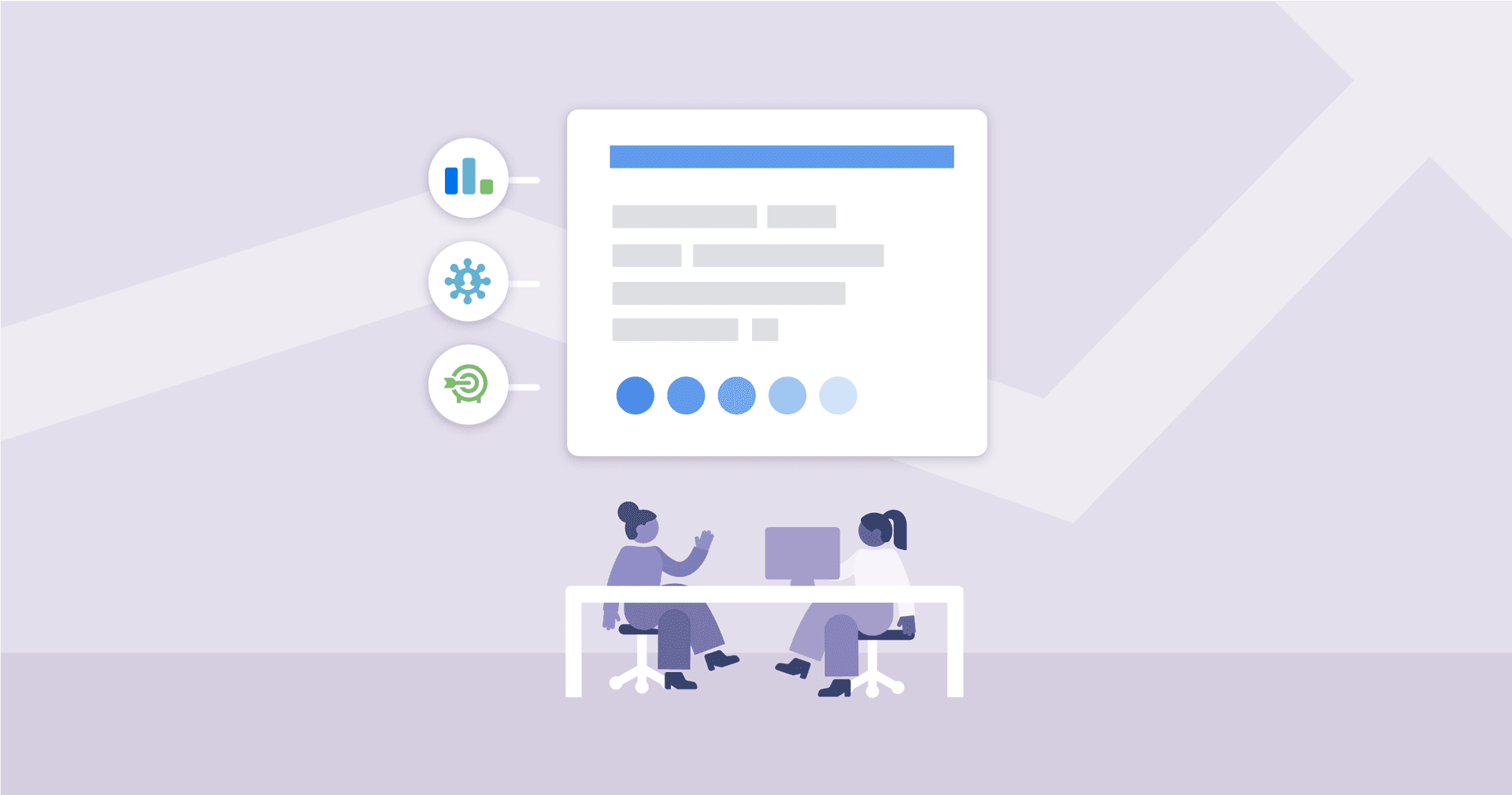Table of Contents
Table of Contents
- How You Charge Is Just as Important as What You Charge
- What Is a Retainer and How Should Agencies Position It to Clients?
- Pros of Retainers for Agencies
- Cons of Retainers for Agencies
- What Is a Project-based Pricing Structure and How Should Agencies Position It?
- Pros of Project-based Pricing for Agencies
- Cons of Project-based Pricing for Agencies
- Picking the Best Pricing Model For Your Agency
7,000+ agencies have ditched manual reports. You can too.
Free 14-Day TrialQUICK SUMMARY:
Understanding retainer vs. project-based pricing helps choose the best financial model for an agency. Learn about the advantages and disadvantages of each model and decide which approach aligns with revenue goals, workload management, and client needs.
Determining the best pricing model for your agency can be a bit like a choose-your-own-adventure novel. Every decision you make leads to a different outcome.
As an agency owner, one of the key decisions you'll need to make is choosing between project versus retainer models for your clients. Each model has unique benefits and drawbacks, impacting your agency's revenue, workload, and overall success.
Your pricing depends on various factors, such as your client type, industry, and services offered, as well as more detailed factors like project scope and level of service provided. This article offers a comprehensive guide that takes an honest look at the pros and cons of being a project-based or retainer-based agency.
In this article, we'll cover:
How You Charge Is Just as Important as What You Charge
Your agency’s pricing model ultimately depends on the nature of the work you do, and it should reflect that while providing maximum value to both your agency and clients.
If we are working with a client on a project that is expected to last for a short period of time, then a short-term contract can be beneficial. This is because it allows us to be flexible and adjust the contract if the project evolves or changes in any way.
– Scott Wilson, Founder of Digital Influence
While some agencies opt for a tailored pricing approach based on the specific requirements of each client, others prefer a uniform pricing model for all. However, it is crucial to note that no single pricing model is suitable for all clients.
That’s why many agencies incorporate some degree of customization into their pricing model, regardless of their fee structure. This may involve providing extra services as add-ons or offering varying packages at different price points, depending on the size and needs of the clients.
Take SEO services, for instance:
Being able to have the time to show the impact of SEO is really important. Depending on the client that can take anywhere from 6-12 months, so having the time to build that allows the agency to show ROI.
–Rocky Pedden, President of RevenueZen
Common Project-based Services vs. Retainer-based Services
Common Project-based Services | Common Retainer-based Services |
|---|---|
Website design | |
Graphic design | Content creation |
Remediation of search engine issues | Public relations |
Digital marketing strategy development | Brand strategy and consulting |
Video production | Email marketing |
Event planning | Influencer marketing |
Market research | Analytics and reporting |
Packaging design | Reputation management |
Copywriting | Media buying |
Sales funnel development | Customer retention |
Mobile app development | SEO auditing and optimization |
Product launch | Pay-per-click advertising |
Fundamental Differences Between Retainer-based and Project-Based Pricing
Retainer-based agencies provide stability and build a closer relationship through consistent work and pricing but are less ideal for businesses with sporadic needs. They offer stability and foster closer relationships with clients through consistent work and pricing but also come with higher client expectations, which often requires your team to take steps to overcome scope creep.
Meanwhile, project-based agencies provide flexibility and specialization but may be more expensive while lacking consistency and ongoing support.
As you can see in the table below, each come with their own pluses and minuses.
Pricing Model | ✅ Pros | ❎ Cons |
|---|---|---|
Retainers | Reliable source of income and improved cash flow | Lack of flexibility, as changing the terms of the agreement can strain resources |
Long-term relationships and deeper understanding of client's business | Harder to onboard new prospects with the higher sell | |
Better work done faster with increased client satisfaction | Less diverse portfolio puts cash flow at risk | |
Recurring revenue = higher valuation | ||
Project-based | More flexible and dynamic to adapt quickly to industry changes and new technologies | Cash flow uncertainty |
More diversified client portfolio for revenue security | Lower client retention rates | |
Clearly defined beginning and end with less chance of scope creep | Limited ability to customize services and adapt to changing needs | |
Easier to sell, as clients are buying a particular outcome | Pressure on the sales team to continually add new clients in the pipe |
Let's take a closer look at each pricing model.
What Is a Retainer and How Should Agencies Position It to Clients?
Like BFFs, retainer-based agencies are reliable and consistent partners for their clients, offering regular services for a fixed fee. For clients, it’s like having a go-to wingman (or wing woman) for all their marketing needs.
This type of pricing is best suited for ongoing services where you’re working with clients for longer time periods (such as a year or more) or when your agency provides a consistent package of deliverables at regular intervals.
“It takes time to build domain authority and gain improved rankings,” notes Joe Gilbert, Managing Director of Red Giraffe. He says that a long-term contract can help them get to where they want to be in that time, as opposed to having clients drop out if they don’t see immediate results.
When there are no consistent deliverables each month, retainer-based pricing is generally based on a fixed number of billable hours. Retainer work often necessitates more interaction with clients, as they anticipate increased support from the agency, which is why most agencies assign a primary point of contact.
Some retainer arrangements may also involve the agency providing consulting services, taking a more active role in decision-making, and guiding the overall marketing strategy.
How To Sell the Benefits of the Retainer Model To Potential Clients
When it comes to retainer-based pricing, agencies can play the long game and remind clients that it's not just a one-night stand–it's a committed relationship with compounding benefits that keep on giving. Agencies should emphasize the long-term nature of this pricing model and how it can provide lasting value for clients.
“Many clients may be hesitant to commit to a long-term contract, as they may be unsure of what the future holds and uncertain of the benefits they will receive,” says Scott Wilson, Founder of Digital Influence. To help them sign on the dotted line, he advises agencies to explain to clients how long-term contracts ultimately can benefit them with:
Cost savings,
Security,
A greater degree of flexibility, and
Help build strong relationships with their suppliers.
Clients who sign retainer agreements benefit from continuous marketing support and expertise to achieve their goals over time. This model fosters a sense of stability and consistency as clients can depend on the agency to deliver top-notch work on an ongoing basis.
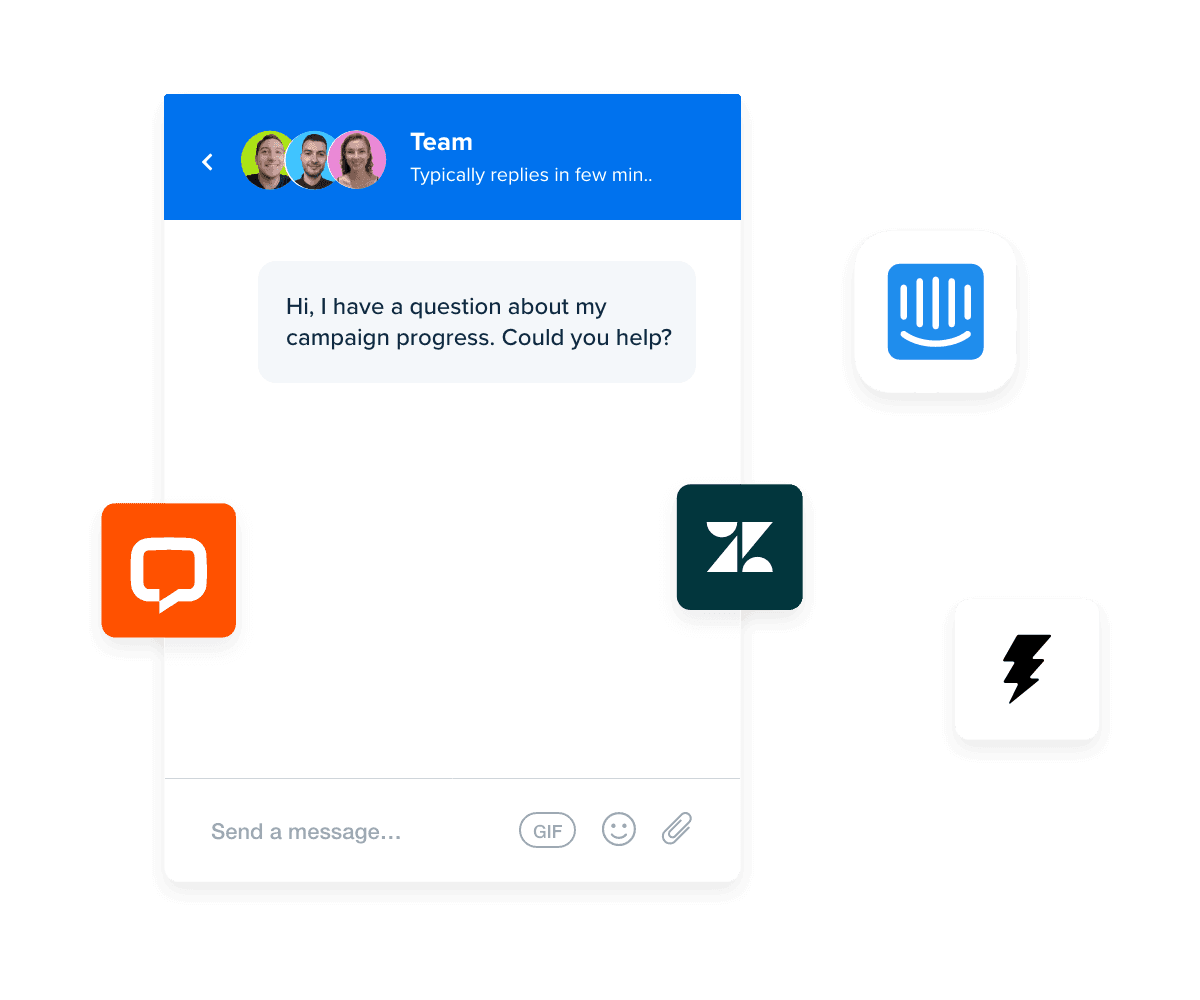
Integrate your client messaging tool into a streamlined reporting platform for seamless communication with clients, and become their number one partner in achieving success. Start your free 14-day AgencyAnalytics trial.
How Long Should a Retainer Agreement Span?
The length of a retainer agreement can vary depending on the needs of the client–and the agency to deliver on them. Retainers last for a minimum of three months and can span up to 12 months or longer.
When it comes to pricing models, agencies don't want to be the clingy ex who refuses to let go of a deal that's no longer needed. It's all about striking a balance between fulfilling commitments and giving clients the flexibility to adapt to changing needs.
Agency Tip: If you’re not sure if your client is the right fit for your agency, do a shorter 3-month agreement as a pilot test before proposing the 12-month contract.
In some cases, the relationship can even be renewed or extended–now that's what we call a happily ever after for both parties involved.
We shoot for the long term. When engaging with a client, we put together a 12-month plan when engaging with a client, but the contract is month-to-month.
– Dominick Montgomery, Owner of The Mongomery Group
What is an Agency of Record (AOR)?
This is when an agency becomes a client’s exclusive marketing agency. In other words, you’re in charge of handling all of your client’s marketing and advertising needs. Larger companies and brands may choose the AOR model to provide them with a single point of contact and a more integrated approach to their marketing strategies.
Talk about a flex for agencies.
This title comes with some bragging rights–especially if your client is highly sought after. However, the AOR model is not as popular as it once was. It’s increasingly seen as a relic from an era before social media and smartphones disrupted everything, leading to clients wanting to work with multiple agencies and freelancers to fulfill their marketing needs.
Pros of Retainers for Agencies
Retainer-based pricing–the trusted sidekick of agencies, always there when you need it most. Let's take a closer look at why this pricing model can be a lifesaver for agencies and their clients alike.
✅ Steady, Predictable Cash Flow
Retainer-based pricing is popular among agencies because it offers a dependable source of income throughout the entire agreement, providing stability and improving cash flow. Retainers are often paid upfront, giving agencies more wiggle room to plan ahead and make strategic decisions to grow their agency. To sweeten the deal, a recurring revenue model gives your agency a higher valuation should you consider selling your marketing agency one day.
✅ Work Quality and Client Satisfaction
As agencies become more integrated with their clients' businesses, they deliver more personalized and effective marketing strategies. This can have a sort of niching down effect–in the best way: your agency becomes an expert in your client’s business, and the work gets easier. Better outcomes for both parties. Win-win!
✅ Client Retention
Unlike a project-based approach, working on retainer enables agencies to develop strategic partnerships and collaborate more closely with clients to achieve their objectives beyond completing mere deliverables. Retainers, being a long-term commitment, offer ample opportunities for additional work, especially if the client is satisfied with the agency's performance. Hello, upsell opportunities!
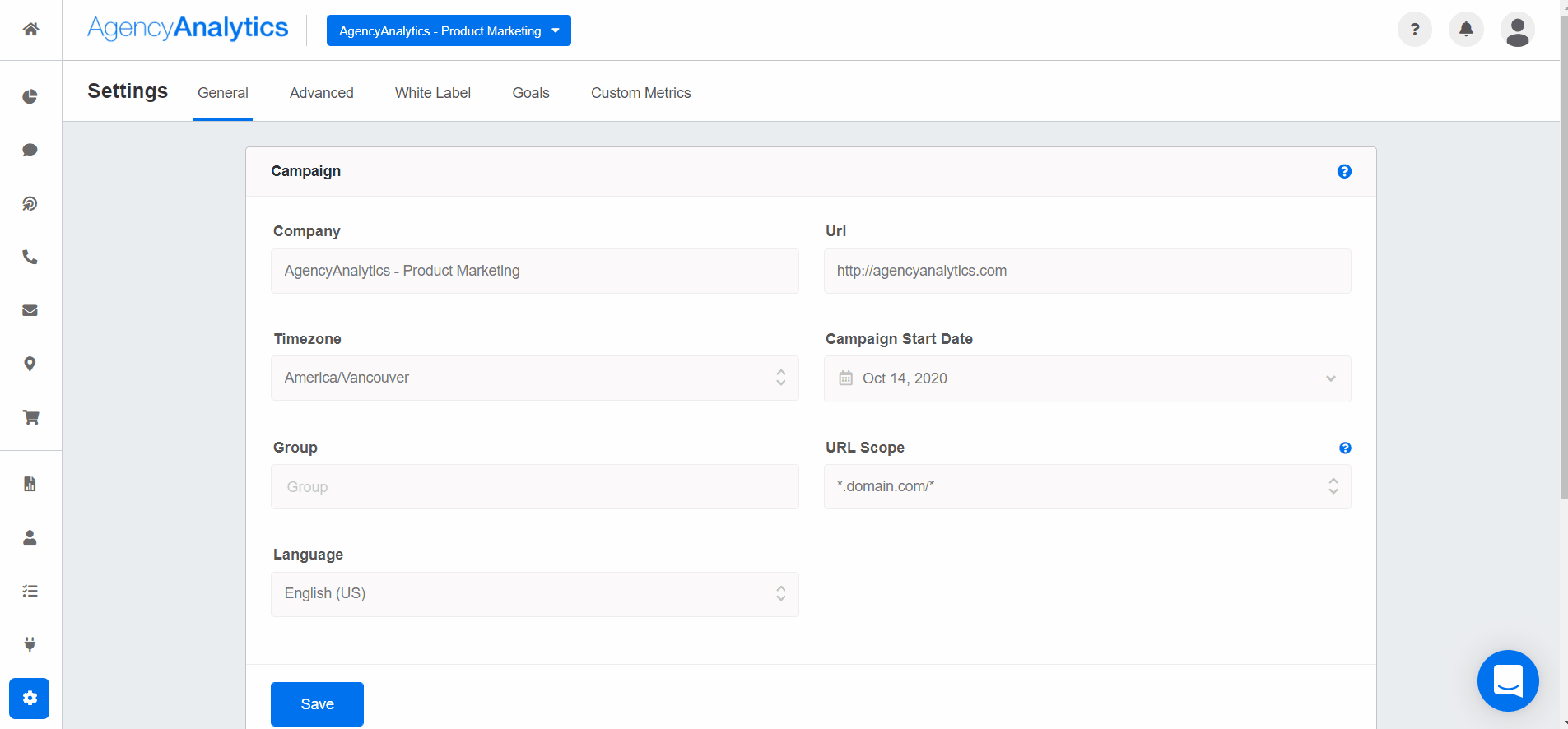
Integrate goal-tracking into your client-facing dashboards. Give your clients a login so they can access their data–on their own time. Try AgencyAnalytics free for 14 days!
By investing in long-term marketing strategies, businesses are able to build relationships with customers, increase brand recognition, and create a clear message that resonates with their target audience. This will help them to develop a loyal customer base and gain an edge over their competitors.
–Scott Wilson, Founder of Digital Influence
Retainers help build a deeper relationship with clients, which can enhance client retention, particularly if they have established a positive rapport with their main point of contact at the agency.
✅ Easier Billing
Retainer-based pricing models offer agencies a predictable income stream, making it easier for them to forecast their resources and allocate them accordingly. This simplifies the billing process, saving agencies time and effort that would otherwise be spent calculating their client costs every month. With retainers, agencies can bill their clients on a regular basis, such as monthly or quarterly, with a fixed fee or a set number of billable hours, allowing for a more streamlined billing process.
Cons of Retainers for Agencies
While a retainer-based pricing model has many benefits, sometimes it can feel like a never-ending subscription to a gym your clients never go to. Let's take a closer look at some of the cons of this pricing model for agencies.
I think long-term contracts mostly serve the agency as they can lock down reccurring revenue for a set period, but the client is stuck regardless of the outcome, which puts them at a clear disadvantage. If a partnership is not going so well, it ultimately becomes a disadvantage for both parties.
– Luke Dane, Founder & Director of Sprocket Digital
❎ Stability Means Less Flexibility
As marketing needs and technology can change rapidly, retainer agreements may not always allow for the necessary adjustments. Retainer agreements typically involve assigning a team to the client's account, making it challenging to modify the terms of the agreement without straining agency resources. This can be especially difficult if the client expects more services for the same fixed rate.
❎ Difficulty Setting Boundaries
Charging a flat rate every month is great if it takes the same amount of hours every month, but that’s not always the case. Sometimes, it can take agencies multiple revisions to get something right, and if it goes beyond the billable hours, your agency may end up having to eat those costs, essentially doing that work for free.
❎ Sales Friction
Retainer-based models can be a harder sell, being a barrier to onboarding new clients:
“The downside of long-term contracts is that they are met with more opposition in the sales process,” says Rocky Pedden, President of RevenueZen. However, he points out that if you can get it, “guaranteed work for a year is a great thing to have.”
❎ Puts More Pressure on One Client
Relying too heavily on one client can be risky–especially if your team dedicates a lot of its resources to them. Putting more eggs in one basket can create a significant financial impact if the client decides to end your agreement or reduce the scope of work.
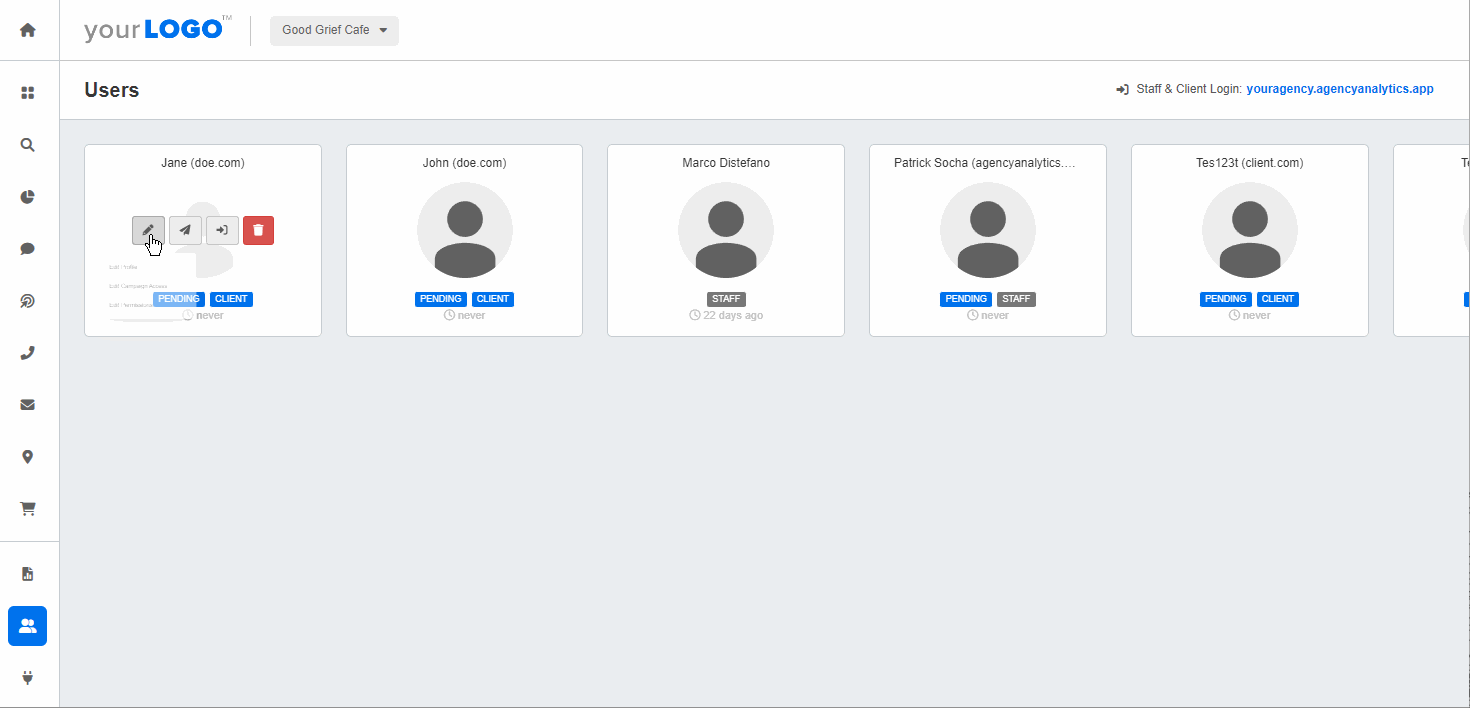
Say goodbye to email threads and hello to clear communication. Create user profiles to streamline all client and staff communication and task management with AgencyAnalytics–it’s free for 14 days.
What Is a Project-based Pricing Structure and How Should Agencies Position It?
As the name suggests, project-based pricing structures involve charging clients based on the specific project being completed. Unlike retainer-based pricing, which focuses on long-term partnerships, project-based agencies are typically brought in for a single job, like a hired gun or specialist team.
For project-based agencies, the first step is to work with clients to define the scope and complexity of the project, followed by calculating the necessary time and resources required to complete it before determining a flat fee or fixed rate.
Project-based pricing works best when deliverables are clear and well-defined. It's often used for projects such as website development or content creation. By leveraging this pricing structure, agencies can provide clients with a clear understanding of costs and deliverables, leading to more efficient and effective project completion.
How To Sell the Benefits of a Project-based Model To Potential Clients
When positioning the benefits of a project-based pricing model, an agency should highlight the flexibility and tailored approach that it can offer to clients.
With a project-based pricing model, clients can engage the agency for a specific project or set of deliverables without committing to a longer-term relationship. This can be advantageous for clients who have a specific need or objective that they want to accomplish that doesn’t require ongoing support.
Additionally, a project-based model allows for more transparency and control over costs, as clients can negotiate a fixed price or budget for the project upfront.
Overall, a project-based pricing model can be a good fit for clients who have a clear understanding of their marketing needs and goals and who are looking for a more targeted and focused approach.
How Long Should a Project-based Agreement Span?
Project-based agreements are typically for a fixed duration, ranging from a few weeks to several months. Ultimately, the duration of the project-based agreement will depend on the project's unique requirements and the agency’s and client’s mutual agreement.
Pros of Project-based Pricing for Agencies
Ah, project-based pricing–the superhero cape of agencies, swooping in to save the day with its clear-cut pricing and defined scope. Let's take a look at some of the pros of this pricing model and why agencies can't help but love it.
✅ Targeted Focus
If there’s something that your agency loves doing and excels at, project-based pricing makes it easy for agencies to choose a niche that focuses on a set of services. A project-based framework is perfect for agencies that have specific expertise in select areas of marketing, such as website design, graphic design, conversion copywriting, or market research.
✅ Adaptive
Project-based pricing is also inherently more flexible and dynamic, meaning your agency can adapt to industry changes and new technologies faster. Not only that, but you’ll also be able to incorporate these new changes and skills into your subsequent marketing projects, which means you can justify charging more for the additional expertise.
✅ Diversified Portfolio
Project-based pricing provides marketing agencies with more freedom in selecting clients, and the shorter contract lengths allow them to take on multiple projects, leading to increased revenue potential and a more diverse portfolio. By leveraging their skills and expertise, agencies can efficiently and effectively complete more projects, generating greater revenue.
This approach can also help agencies expand their client list and showcase their experience and expertise, making them more attractive to new prospects. Ultimately, project-based pricing offers agencies the opportunity to build a strong reputation and grow their business over time.
✅ Clear Beginning and End
Having a clearly defined beginning and end makes it easier to allocate resources and plan accordingly. There is also less chance of scope creep, as everyone should be on the same page.
✅ No Need To Report Hours
By negotiating a fixed price or budget for each project, agencies can streamline their billing approach, reducing the hassle of tracking and reporting hours to clients. However, you should keep an internal record of employee hours for project management and agency profitability purposes.
✅ Easier to Sell
Offering short-term contracts allow lowers the barriers to securing new clients, says Luke Dane, Founder & Director of Sprocket Digital. Having a clearly defined scope of work, timeline, and deliverables reduces friction while you’re trying to get new agency clients.
They offer a lower risk for clients since the contract is for a specific project or set of tasks. Clients can be assured that they won't be stuck with an agency that isn't meeting their needs or delivering the results they expect.
Although scoping projects can be a bit more challenging at first–you don’t want to overprice or underprice your services–the more projects your agency completes, the better you’ll become at estimating how long it will take for your team to finish the job.
Cons of Project-based Pricing for Agencies
Project-based pricing may seem like a match made in heaven, but for agencies, it can sometimes feel like a rocky relationship–full of surprises, challenges, and unexpected costs. Let's take a closer look at some of the cons of this pricing model.
❎ Limited Client Retention
Project-based pricing can be subject to fluctuations in demand and revenue. While this may not be an issue if projects are consistently lined up, agencies may experience downtime between projects, leading to periods of uncertainty and financial strain. Of course, this isn’t an issue if you always have another project lined up, but life often doesn’t work that way.
❎ Limited Scope for Customization
When your agency quotes a fixed price for a project, you essentially agree to deliver a specific set of deliverables within a specific timeline. Any changes or additions to the project scope can impact the project cost and timeline, which is challenging for clients with evolving needs that require a high degree of flexibility in terms of scope and deliverables.
Although there are ways to protect your agency from scope creep based on client changes, if your agency miscalculates the time and effort required to complete the task as scoped, that will fall directly on your bottom line.
❎ Revenue Unpredictability
When your income depends on continuously working on new projects, it can cause stress and put pressure on your sales team to always be closing. But attracting new clients and signing them takes time, which means your agency may be forced to alternate between feast and famine mode.
Agency Tip: Set up effective budgeting plans, project management systems, and financial forecasting to ensure your agency operates smoothly even during fluctuating demand.
Picking the Best Pricing Model For Your Agency
As your agency continues to grow and evolve, ensure that your pricing model is the right fit for you and your clients.
Whether you choose a project-based or retainer-based approach or a combination of both, ultimately, the goal of any pricing agreement should be to create a mutually beneficial relationship that maximizes the value of your services for your agency and your clients.

Clearly demonstrate your agency’s ROI month after month with automated reports that keep your clients coming back for more. Start your free 14-day trial today!

Written by
Melody Sinclair-Brooks brings nearly a decade of experience in marketing in the tech industry. Specializing in B2B messaging for startups and SaaS, she crafts campaigns that cut through the noise, leveraging customer insights and multichannel strategies for tangible growth.
Read more posts by Melody Sinclair-BrooksSee how 7,000+ marketing agencies help clients win
Free 14-day trial. No credit card required.




